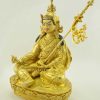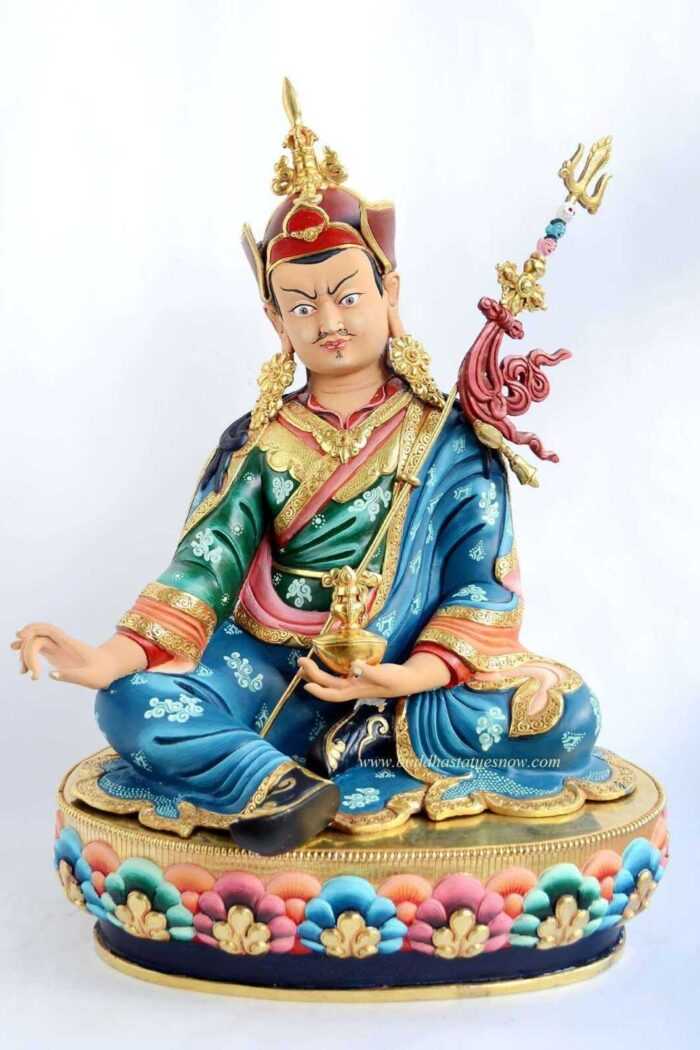Guru Rinpoche is also known as Padmasambhava which translates as “lotus born” in Pali. Additionally, the origins of Guru Rinpoche are mythical but they also have historical significance. The mystical location of his birth was called the “land of the Dakinis”, also known as Oddiyana. Our Guru Rinpoche statue depicts the founder of the first Tibetan Buddhist tradition known as – Nyingma.
In Tibet, Guru Rinpoche represents the father of Tibetan Buddhism and his followers believe he is the second Buddha who revealed Tantric Buddhism to sentient life. The first Buddha in our kalpa was the self taught Shakyamuni Buddha who revealed the original Dharma.
Guru Rinpoche Statue Features:
Guru Rinpoche is depicted holding the khatvanga which is leaning against his left shoulder. Additionally, the khatvanga symbolically depicts the impaled three heads representing the 3 worlds (Trailokya). The 3 worlds are desire, form and formlessness. Guru Rinpoche statues reflect his total liberation from the Trailokya.
Furthermore, the guru symbolically holds the vajra in his right hand. The word vajra means diamond or thunderbolt in Sanskrit. Indeed, this is the same symbol that the generals carried into battle in ancient India. However, spiritually it symbolizes the indestructibility of the diamond and the unstoppable force of the thunderbolt. It is also the preferred weapon of the Vedic God Indra. As a result, the vajra has become associated with spiritual perseverance and indestructibility.
Our Guru Rinpoche statue features the 5 petals of the lotus flower on his hat. Additionally, in the palm of his left hand he holds the elixir of eternal life in his vessel of immortality.










